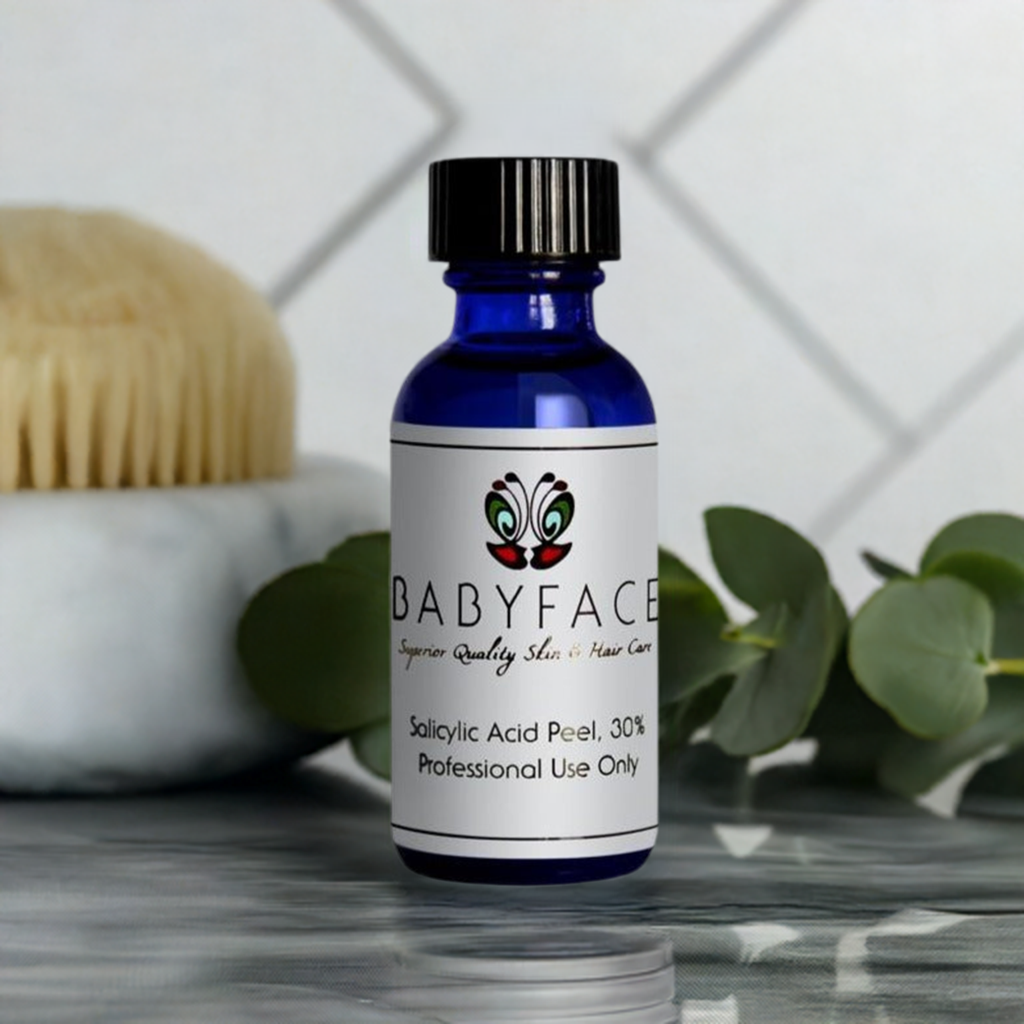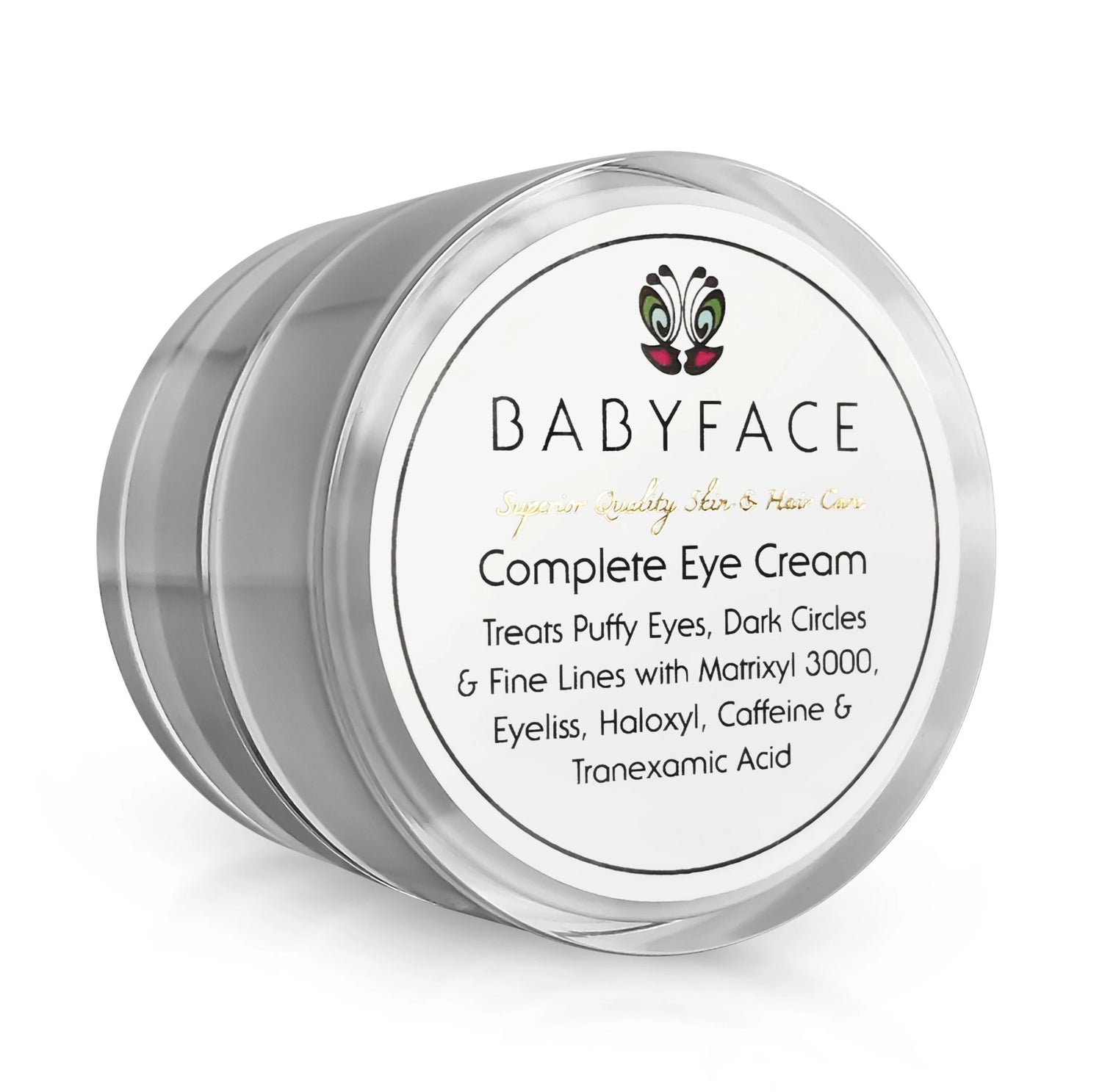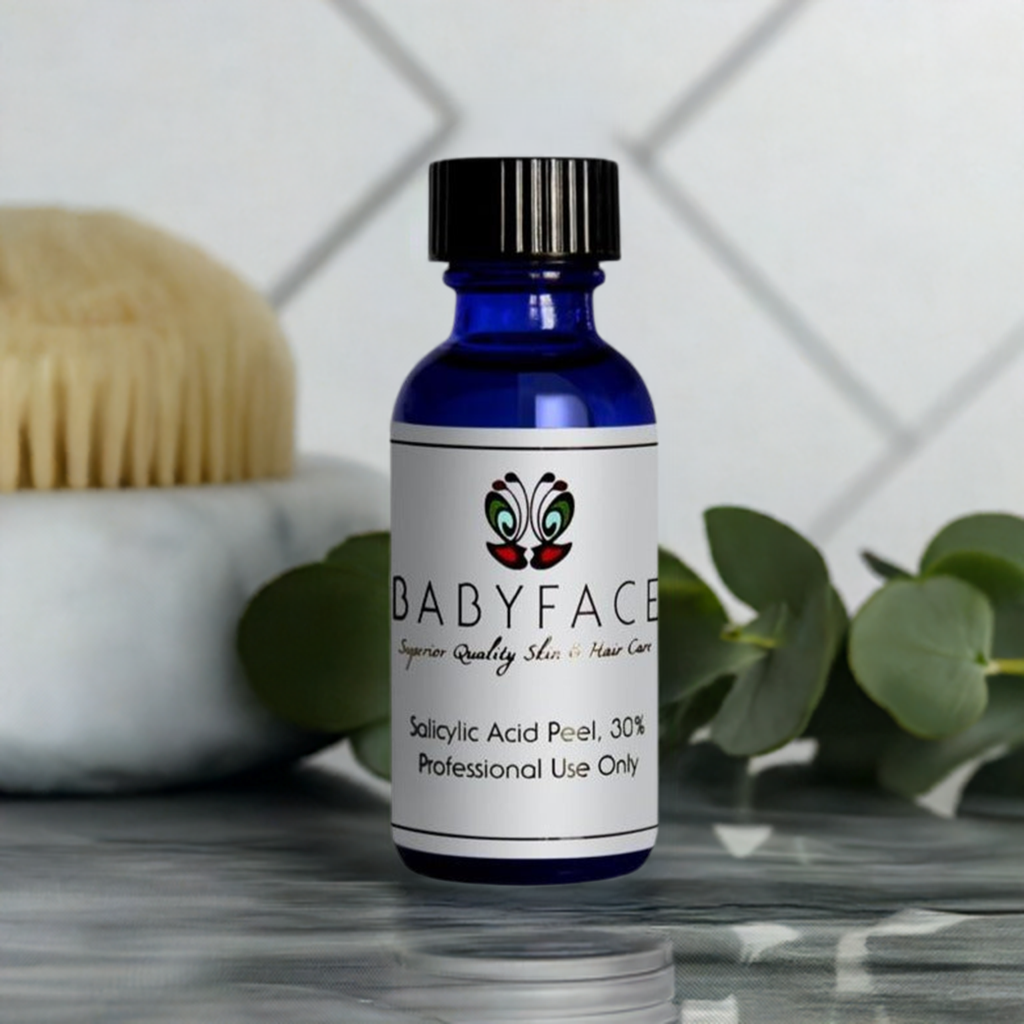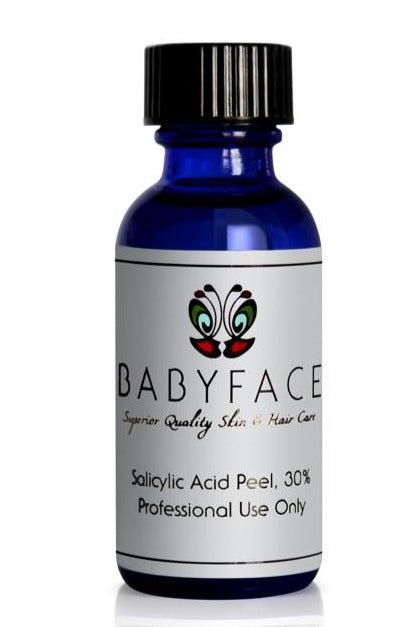Babyface
30% Salicylic Acid Chemical Peel, Acne & Blackheads, 1.2 oz.
30% Salicylic Acid Chemical Peel, Acne & Blackheads, 1.2 oz.
Couldn't load pickup availability
Product Details
Product Details
New to chemical peels? Check out this article to help you choose the best peel for your skin type.
Note - this peel is not alcohol based, so it will not evaporate and leave a white residue (some believe this to be frosting but it is actually the dried salicylic left behind when alcohol dries). Our 30% salicylic peel works the same as an alcohol based peel, but its advanced formula is more comfortable to use; it will not sting as much as an alcohol based peel will. If you like to feel a sting though, simply apply to damp skin.
What Is Salicylic Acid and What Does It Do?
- Controls Excessive Oil
- Unbuffered: Low 1.5 pH
- Cleanses Pores, Reducing Blackheads
- Improves Acne Scars and Uneven Skin Tone
- Can be helpful in controlling D. folliculorum (face mites)
- Effective Treatment for Warts
Salicylic acid peels are an effective way to refresh your skin. Salicylic acid works by softening keratin, a protein that forms part of the skin structure. This helps to loosen dry scaly skin making it easier to remove. Salicylic is oil soluble, so it is perfect for oily and acne prone skin that needs deep pore cleansing and loosening of blackheads. When used as a topical agent, the acid solution breaks down lipids (i.e., oils and fats) in the upper layers of the skin.
A beta-hydroxy acid (BHA), this acid penetrates the upper layers of the epidermis only. Salicylic can be used weekly for oil and blackhead control.
What Strength Should I Use?
You can begin treatment at home starting with a low-concentration solution. Beginners should start with 7% – 15% maximum. Our Professional 30% solution (recommended for professional use only and not for a beginner) can be diluted with isopropyl alcohol.
For beginners, dilute 2 parts isopropyl alcohol to 1 part peel solution for 7.5% strength peel, and dilute equal parts isopropyl alcohol and peel solution for a 15% peel.
What Are the Expected Results and Recovery Time?
Any itching or stinging sensation you may experience will usually go away in a few short minutes. Our peel is not in an alcohol base, so you will most likely not experience any "frosting," which with salicylic peels is not actual skin frosting anyway, but rather the product just re-crystalizing as the alcohol dries. Our product does not dry out, it stays active the entire time it is on your skin.
Peeling usually occurs about three days after the treatment and can last for up to a week. Not everyone will experience the same degree of peeling. Some people peel very little or not at all, while others may peel rather heavily; it simply depends on where your skin's natural turnover cycle is. Peeling begins usually in 2-3 days, but can take as long as 1 week in cases of deeper peels. If no peeling occurs, it does not mean the peel did not work.
It is very normal to feel a sensation of having very dry skin for some time. The frequent use of skin moisturizer, such as Babyface’s Post Peel cream or our Pure Emu Oil is recommended. Once the peeling has ceased, the results of the treatment session should become apparent and you will usually be able to determine at that time if you need more follow-op sessions.
For peel instructions, please click "Usage." There you will find information on how to apply Babyface acids and peels.
Usage
Usage
Warnings: Do not use salicylic if you are allergic to aspirin, or pregnant. Because microdermabrasion and chemical peels both deeply exfoliate the skin, they should not be used concurrently. It is recommended that non-professionals consult a physician before deciding to use a chemical peel. Always avoid sun after a chemical peel procedure, and use sunscreen on a daily basis. Do not use chemical peels if you use Accutane or are using a prescription retinoid (such as Retin-A or Tretinoin).
Dilution Recommendations
15% Peel: Mix equal parts isopropyl alcohol and peel solution for a 15% peel (recommended for advanced users).
7.5% Peel: Mix 2 parts isopropyl alcohol to 1 part peel solution for 7.5% (recommended for beginners).
Other important cautions:
--Because salicylic acid is in the aspirin-family, it's important for clients who are allergic to aspirin products to avoid using this product.
--If you are pregnant or lactating, consult with your OB/GYN before using chemically based products.
--Always patch-test the skin before using acid-based products. If you experience irritation, rinse immediately with cool water.
--Wait 24-48 hours to see if irritation develops.
--Do not apply to red, irritated skin.
--Do not use manual exfoliants, nor scrubbing brushes, within 24 hours of use.
--Do not use drying acne products, other acids, nor retinoids, for 48 hours before using this, and do not resume for 48 hours after the peel.
--Chemical peels cause the skin to be photo-sensitive, so be sure to use sun protection after your peel.
The Process:
A basic salicylic acid peel has four steps: the priming, the peeling, the neutralizing, and the moisturizing processes. It might sound complicated, but it’s quite simple, really.
Step #1:
First off is the priming. Priming means getting the face ready to accept the salicylic acid peel. You can do this by washing your face with a facial wash, then apply rubbing alcohol all over the area to be treated to degrease skin which allows the acid to work. You may also use acetone—yes, the stuff you use to remove nail polish.
Removing all product and oil residue will ensure that the peeling solution will be better absorbed by the skin. If you plan on using acetone, you should buy one without any additives, fragrances, and colorants. Put some on a piece of cotton ball or square and wipe your face until the squares or balls become clean.
Step #2:
The next process is the peeling, and it’s simply the step where the solution is applied onto the face. When you recreate this, remember to avoid the eye and mouth areas as these are very sensitive. You should leave the solution on your face for the recommended time (or as skin tolerates it) before going through the next process, which is the neutralization. This is not an alcohol based peel, so the dry residue (frosting) will most likely not be visible.
Recommended Time Schedule
First Peel left on for 1 minute (as skin tolerates it). Second Peel left on for 2 minutes (or, as skin tolerates it). Adjust future peel times based on your skin's tolerance.
The general recommendation is every 4 weeks for beginners. Experienced users can adjust timing according to their needs.
Step #3:
The chemical peel involves an acid. To stop this acid from working its way into your skin, you have to neutralize it with something basic. Commercial spas may use all sorts of fancy concoctions, but a simple baking soda wash will do the trick (1 tsp baking soda in 1 cup of water).
Step #4:
After neutralizing the acid, you may notice that your skin will already be visibly smoother and fairer, albeit a little dry. Dryness is a normal result of the peeling, so the next process—the moisturizing process. We recommend our 100% Pure Emu Oil, or Post Peel Nutrient Cream.
Ingredients
Ingredients
Propylene Glycol, Salicylic Acid, Water, Hydroxyethylcellulose, Diazolidinyl Urea (and) Iodopropynyl Butylcarbamate
Share




